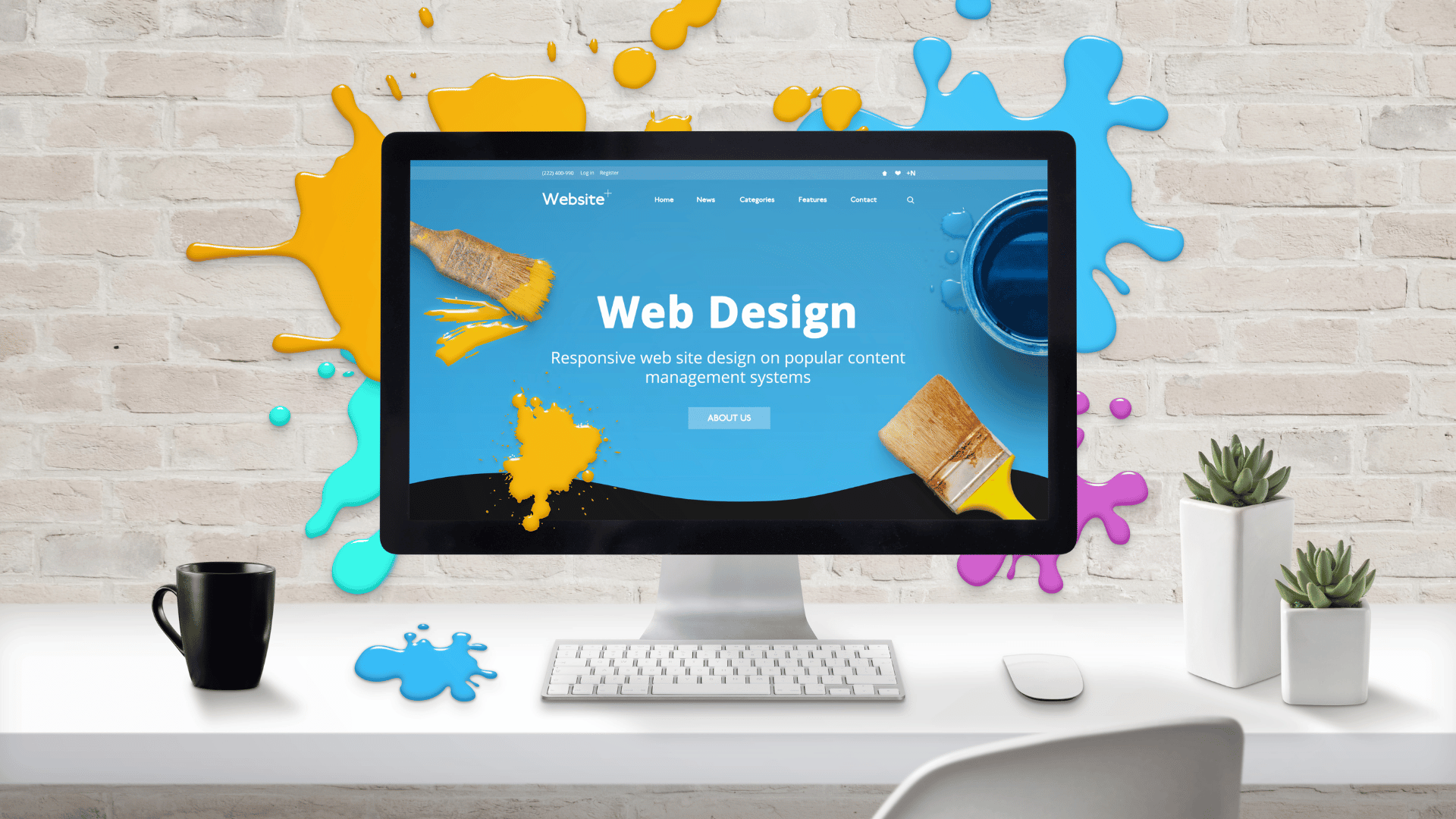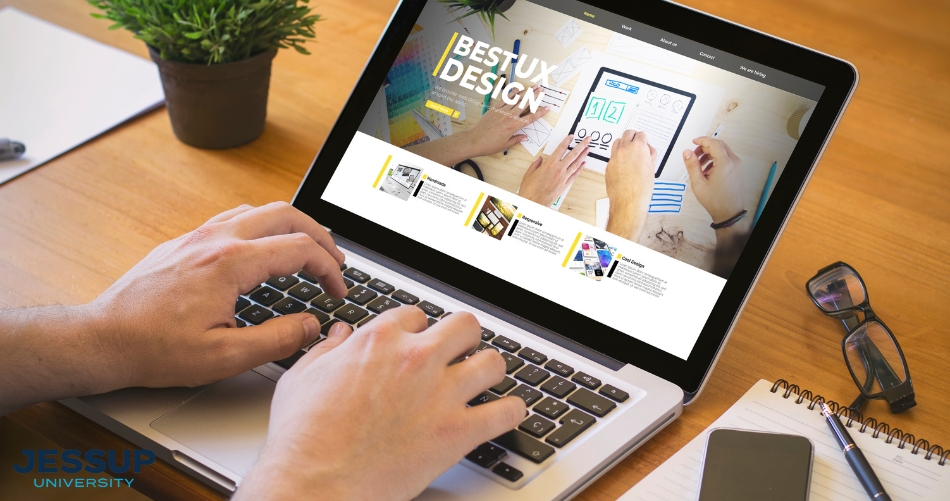Website Design London Ontario Focused on UX
Website Design London Ontario Focused on UX
Blog Article
Understanding the Crucial Element That Compose Effective Internet Layout Strategies
Recognizing the essential elements can make all the difference in customer interaction and satisfaction when it comes to web layout. You require to ponder elements like instinctive navigating and responsive layout to develop a smooth experience. That's simply the begin. Each component plays a crucial duty in directing users via your material and influencing their behavior. Curious regarding what really drives these approaches? Let's discover deeper into these essential components.
The Importance of Customer Experience (UX) in Web Layout
Customer experience (UX) is the foundation of effective website design, forming exactly how visitors communicate with your site. When you prioritize UX, you develop a space where individuals feel comfy, engaged, and valued. A well-designed UX warranties that your target market can easily browse your content, find information swiftly, and appreciate their overall experience.You needs to consider your customers' choices and demands, as this understanding directly affects their contentment. By focusing on aspects like lots times, mobile responsiveness, and access, you improve their experience considerably.Moreover, a favorable UX cultivates trust and encourages repeat brows through, which can lead to higher conversion rates. Remember, individuals will not wait to leave your website for a rival if they encounter stress or confusion. Ultimately, purchasing UX isn't just about looks; it's regarding creating a user-centric design that keeps visitors returning for even more.
Crafting Instinctive Navigating for Seamless Surfing
When developing a web site, crafting instinctive navigating is crucial for ensuring visitors can discover what they need without aggravation. Begin by organizing your material realistically; team relevant web pages with each other to help customers forecast where to locate information. Usage clear, concise labels for navigating web links, preventing jargon that may confuse your audience.Consider applying a hierarchical framework with a primary menu and dropdowns for subcategories, making it easy to pierce down into details topics. Incorporate a search bar to empower customers to locate content directly, especially on bigger sites.Don' t forget mobile customers; establish your navigation stays available on smaller displays. Keep it simple and constant across all pages to enhance experience. By concentrating on these aspects, you'll create a seamless browsing experience that maintains site visitors involved and motivates them to explore even more of what you have to provide.
Responsive Style: Adapting to Various Devices
As the range of devices individuals make use of to access the internet remains to expand, guaranteeing your web site is responsive has actually never been more crucial. A receptive style implies your site adapts flawlessly to various display sizes, from mobile phones to desktops, giving a superior viewing experience. This flexibility not only improves individual satisfaction yet also improves your site's efficiency in search engine rankings.To produce a responsive design, use versatile grids and formats that instantly get used to the display's measurements. Execute CSS media inquiries to customize styles based upon tool attributes. Prioritize necessary web content, guaranteeing it's easily accessible on smaller sized screens without frustrating users.
The Function of Visual Hierarchy in Effective Layouts
Aesthetic hierarchy is crucial for directing your target market's attention where it matters most. By efficiently utilizing focal factors, contrast, typography, and color, you can create a design that connects your message clearly. Let's explore how these aspects interact to boost your layout.
Importance of Focal Information
Focal points are vital in internet style, guiding users' attention to one of the most important aspects on a web page. By tactically putting these centerpieces, you produce a clear aesthetic pecking order that enhances user experience. Consider what you want your visitors to see first-- whether it's a call-to-action button, a key photo, or considerable information.Using dimension, placement, and contrast, you can attract interest to these focal points, making them stick out. Keep in mind, the a lot more famous the centerpiece, the most likely customers are to engage with it. A well-designed format not only records rate of interest however also leads customers with your content effortlessly, ensuring they soak up the information that matters most. Focusing on prime focus is important for reliable communication on your website.
Shade and Contrast Usage
Effective usage of shade and comparison can significantly affect how individuals regard your web site's web content. By choosing a shade palette that aligns with your brand, you develop a psychological connection with visitors. High contrast between message and background enhances readability, ensuring your message attracts attention. Usage contrasting colors to highlight important elements, like call-to-action switches, leading users' attention where it matters most.Additionally, balance is key; excessive comparison can be frustrating, while inadequate may make your material unseen. Implementing a visual pecking order with shade assists customers browse your site intuitively. You want them to easily compare headings, subheadings, and body message, which improves their general experience. Eventually, efficient shade and comparison usage keeps users engaged and encourages them to explore better.
Typography's Influence on Design
While it's very easy to forget, typography plays an important function fit your web site's style and overall individual experience. It establishes a visual power structure that guides visitors via your web content. By choosing the appropriate typefaces, dimensions, and designs, you can emphasize key information and create a smooth circulation. Making use of larger headings helps users quickly recognize sections, while smaller sized body message offers in-depth understandings without overwhelming them. Consistent typography not just improves readability but additionally reinforces brand name identity. Remember to stabilize decorative font styles with clarity to maintain professionalism and reliability. Ultimately, reliable typography assurances your message reverberates, making your web site a lot more easy to use and interesting. Prioritizing this component can substantially elevate your layout technique and influence.
Making Use Of Compelling Material to Involve Site Visitors
Exactly how can you maintain your visitors engaged and returning for even more? The response hinges on compelling material. Start by understanding your target market and what interests them. Develop interesting posts, fascinating stories, or enjoyable videos that reverberate with their demands. Use a conversational tone to make your web content relatable; it must seem like a friendly conversation instead of a lecture.Incorporate visuals like photos, video clips, and infographics to damage up message and maintain points vibrant. Do not fail to remember to welcome communication-- ask questions, motivate comments, or consist of surveys to trigger discussions.Also, focus on quality and conciseness. See to it your bottom lines shine through without unnecessary jargon or fluff. Bear in mind, top quality over quantity issues; it's far better to have fewer, high-impact pieces than a multitude of sub-par ones. Ultimately, when your content's engaging, site visitors will not just remain yet additionally share it with others.
The Impact of Shade Psychology on Individual Interaction
When you select colors for your website, consider just how they can affect individual feelings and assumptions. Colors can boost your brand name identity while likewise making certain ease of access through comparison. Recognizing these elements can substantially enhance individual interaction and interaction.
Color Meanings and Emotions
Recognizing color psychology is necessary for developing an interesting internet design, as the shades you pick can influence and evoke details emotions user interactions. Various shades can trigger numerous feelings; for instance, blue typically conveys trust and calmness, while red can evoke excitement or necessity. You assist your users towards desired activities when you incorporate these shades thoughtfully. Yellow can motivate optimism and joy, making it efficient for telephone calls to action, while environment-friendly promotes relaxation and a connection to nature. By aligning your shade palette with the feelings you intend to generate, you boost user experience. Consider your target market and the message you wish to share, ensuring your color options resonate and develop a long lasting influence.
Brand Identification With Color Styles

Shade Comparison and Access
While picking a shade palette is critical, assuring ample comparison is essential for ease of access. You want your website to be aesthetically attractive, yet it needs to additionally satisfy all users, consisting of those with aesthetic problems. High contrast between text and background boosts readability, making it less complicated for every person to engage with your content.Think about color psychology, also. Various colors stimulate numerous feelings and reactions. By understanding just how shades influence individual communication, you can assist individuals toward desired activities. For example, using cozy shades can create necessity, while trendy colors may instill peace. Constantly test your shade combinations to confirm they meet ease of access criteria, assisting you develop an inclusive experience that resonates with all site visitors.
Optimizing Tons Rate for Enhanced Performance
Given that users anticipate websites to load promptly, optimizing tons rate is critical for boosting performance and individual complete satisfaction. A slow-loading website can annoy visitors and drive them away, so you need to do something about it. Beginning by pressing pictures and making use of modern-day styles like WebP. This can significantly minimize documents sizes without giving up quality.Next, minimize HTTP requests by integrating CSS and JavaScript files. Less demands imply quicker tons times (website design london Ontario). Implementing careless filling for images and videos guarantees that material tons just when individuals scroll down, improving preliminary tons speed.Additionally, take advantage of internet browser caching to save regularly accessed sources, permitting repeat site visitors to enjoy much faster loading times. Choose a reputable holding supplier. Their efficiency straight influences your website's rate
Regularly Asked Questions
Exactly How Can I Determine the Efficiency of My Web Style Method?
To gauge your internet layout approach's performance, track customer engagement metrics like bounce prices, conversion prices, and typical session duration. Usage tools like Google Analytics to gather insights and change your technique based on the data.
What Prevail Errors to Prevent in Web Design?
In web layout, stay clear of messy website design london Ontario designs, inconsistent typefaces, and slow-moving filling times (website design london Ontario). Do not overlook mobile responsiveness or disregard user screening. Prioritize availability and assurance clear navigating to enhance user experience and maintain visitors involved
Exactly how Typically Should I Update My Site Design?
You need to update your site style every 1 to 2 years, or whenever significant modifications occur in your brand name or industry. Normal updates keep your website fresh, enhance user experience, and boost functionality.

What Tools Can Help Analyze Customer Habits on My Website?
To analyze customer habits on your site, you can make use of tools like Google Analytics, Hotjar, or Crazy Egg. They'll give understandings into customer communications, helping you make educated choices for improving your website's efficiency.

Exactly how Do I Pick the Right Typeface for My Internet site?
Selecting the best font for your internet site involves thinking about readability, style, and placement with your brand name. Try out different fonts, confirm they're legible on numerous tools, and maintain uniformity across your web pages for a natural look. Include a search bar to encourage customers to discover content straight, especially on bigger sites.Don' t fail to remember about mobile customers; establish your navigation stays accessible on smaller sized screens. Reliable use of shade and contrast can considerably affect exactly how customers view your internet site's web content (website design london Ontario). Recognizing color psychology is essential for producing an interesting web style, as the shades you choose can stimulate specific emotions and affect individual communications. By understanding just how colors effect customer communication, you can guide customers towards wanted actions. Considering that customers expect web sites to fill rapidly, optimizing tons rate is essential for boosting performance and individual satisfaction
Report this page